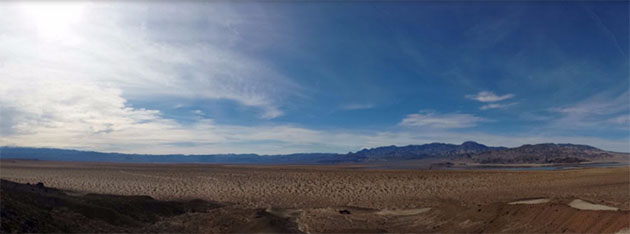
It is unique due to its large size, which is 6.54 million tons of lithium carbonate equivalent (LCE). The Indicated resource is 597 million tons with a grade of about 0.09% lithium, or 2.857 million tons LCE. The inferred resource is 779 million tons at 0.089% lithium, or 3.683 million tons of lithium carbonate equivalent. It is one of the largest lithium deposits in North America.
Dr. Bill Willoughby, who joined Cypress as a consultant to commercialize and optimize the new lithium discovery and then became CEO, stated, “This is a major milestone for Cypress. To have advanced from drilling the first hole on Dean just over a year ago to the resources we have now is truly remarkable. It’s exciting not only to see validation to the size of deposit, which is something we’ve anticipated, but also all the other factors line up that affect how a project can become a mine. I’m looking forward now to the PEA next, which I anticipate based on the results today, we will work to complete as quickly as possible.”
The metallurgy at the discovery site appears to be favorable to extraction, whereas some other claystone deposits have not been. “Preliminary test work conducted at SGS Canada Inc (Lakefield) and Continental Metallurgical Services, LLC has shown the material exhibits high lithium extractions with short leach times. Lithium extractions greater than 80% can be achieved in 4 to 8 hours using conventional dilute sulfuric acid leaching. Currently, Hazen Research Inc is conducting additional leach tests and preliminary results confirm high lithium extractions for new mineral zones,” the company noted.
“The presence of acid leachable lithium presents a significant cost savings by avoiding calcine and regrind of material during processing. Preliminary results also show the consumption of sulfuric acid and other reagents are relatively low,” Cypress Development stated.
The deposit might have a theoretical 200 to 300-year old mine life, according to company representatives. At the moment, the company has not found the bottom of the deposit.
The asset is located in Nevada and is not far from the Tesla Gigafactory. Much of the world’s lithium production is located outside the U.S., so having such a large discovery occur in Nevada is especially noteworthy.
The deposit itself is a milestone but the company is also looking forward to more drilling success in the next 6-12 months. The completion of a preliminary economic assessment is expected by September.
Industry observers hailed Cypress’ maiden resource element. Peter Epstein of Epstein research wrote on May 2, Cypress Development “killed it with its maiden NI 43-101 compliant lithium resource estimate yesterday! The whisper number was 4 to 6 million Inferred tonnes of Lithium Carbonate Equiv. (LCE), (which would have been a tremendous result), but Global Resource Engineering Ltd. determined there’s an estimated 6.54 million metric tonnes LCE.”
“Management has delivered a blockbuster maiden resource, >6 million tonnes of LCE (combined Indicated & Inferred). Therefore, Cypress need never worry again about resource size; it already has huge scale,” Epstein concluded.
The Critical Investor noted on May 9 the speed at which Cypress Development is working: “Cypress Development is proceeding at breathtaking pace, going from its first drill hole at the Dean claystone lithium project in Nevada, U.S., to the very recent announcement of a maiden resource estimate on both Dean and Glory projects in just over a year.”
“As the resource of Dean/Glory is quite large, the potential for a project with very impressive economics could be realistic,” The Critical Investor stated.
The company has approximately 60 million shares outstanding, of which 20% are closely held.
In December 2017, the U.S. government designated lithium as a “critical mineral” of strategic importance. One driver of lithium consumption is its use in batteries for electric vehicles. Many countries around the world are interested in acquiring EVs or making their own because they don’t produce toxic tailpipe emissions and run on electricity, not directly on fossil fuels. Batteries of all kinds utilize about half of all the world’s mined lithium.
